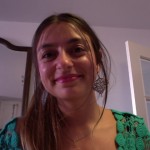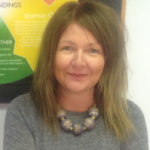
Daniela Kemeny is a year 6 teacher and PYP Coordinator at SEK International School – El Castillo, Spain
This article shares an inquiry into the way that the physical space influences teaching and learning with young children. It describes what provoked the inquiry, the questions that were asked, the research done and how the action was taken to re-design learning environments to better support child friendly inquiry.
Part of our inquiry journey into the PYP includes a commitment to self-assessment, which is why towards the end of the last school year we reflected and identified some challenges that we were facing in our early childhood programme.
We discovered that our physical learning spaces were conditioning a certain approach to teaching and learning that limited the implementation of a play-based, inquiry approach and other practices within the PYP philosophy.
Collaborating with Andrea Muller, an experienced IB PYP early childhood educator, was an important opportunity for tuning in: we were able to explore different resources and gain insight into the topics we were wondering about.
We brainstormed to uncover our prior knowledge. We knew that the way we set up classrooms, materials and exhibitions has a direct impact on children’s motivations to explore, wonder and create. We acknowledged the importance of the environment as the “third teacher” and we were aware that the physical spaces can either promote or hinder teaching and learning in line with our school’s mission and vision, and that of the PYP.
We began by reflecting on what our current spaces looked like and in what ways these were shaping inquiry.
We used different resources to push our reflections forward and then used the PYP key concepts to shape the questions that would drive our inquiry:
- Why are our teaching and learning practices the way they are and in what ways does the physical space shape them?
- What does current research say about learning spaces and how can we use this to reflect on ours?
- What are the different perspectives in regards to the organization of physical space in early childhood education?
- In what ways does the physical space connect to children’s inquiries?
- What do effective learning spaces that promote child friendly inquiry look like?
- How can we use the physical space and materials to truly provoke children’s wondering and learning?
- How is the physical space responsible for the type of teaching and learning that goes on? What can we do about this?
- What changes do we need to make to our physical space for it to truly promote teaching and learning in accordance to our school’s mission and vision, and that of the PYP?
These questions led us to the finding out stage of our inquiry as we began comprehensive research and study of literature around the topic of learning spaces and their role in teaching and learning.
After our research we came up with different generalizations about the way that spaces influence teaching and learning and what spaces need to look like in order to promote child friendly inquiry. Some of these generalizations include:
- Children need spaces where they can engage in active physical play as well as quiet and calm activities and where they can learn individually and in small and large groups.
- Materials need to be readily available in order to provoke children’s wondering and inquiry.
- The physical spaces within which children interact must offer a calming and nurturing environment, where children and adults feel welcome, safe and valued.
- Nature and aesthetics are important components of the environment and should be considered both indoors and outdoors.
These generalizations helped us take action and we began by working with architects, construction workers and designers to plan our new learning spaces. Soon, walls were being torn down and floor plans were being created.
By September we were ready to inaugurate our new nursery and early childhood learning spaces.
As the school year began, we saw how the re-design of the learning environment truly helped shape the teaching and learning. Some of the changes that took place:
- Learning engagements are organized around learning centres, which provide for opportunities, materials and interactions that promote inquiry.
- Collaborative planning has resulted in the creation of appropriate emergent literacy and numeracy provocations and inquiries.
- Art is sprouting up everywhere as a way in which children communicate and share their learning and understanding.
- Outdoor and indoor spaces are being actively used for discovery and inquiry.
We are happy with the changes that have taken place, yet we realize that in order to ensure sustainable change we need an ongoing commitment to reflection, self-evaluation and training. Because of this, we have enrolled many of our teachers in official PYP workshops as well as other training opportunities, and we hope that through our collaborative planning and reflection we can continue to take action.
—
Daniela Kemeny has taught in IB World schools both in America and Europe, where she has also been a workshop leader, site visitor and consultant. Considering herself an inquirer and risk taker, she enjoys taking on challenges and conducting her own research to explore and broaden her teaching and learning philosophy.
Judith Canning is an Early Years and Primary teacher, specialized in the teaching of phonics and English as a second language. She also holds an architecture degree. Judith has also been appointed the Early Childhood Coordinator at her school, where she is currently using her innovative attitude towards education as well as her risk taker and inquirer attributes to ensure high quality practices within the school.





